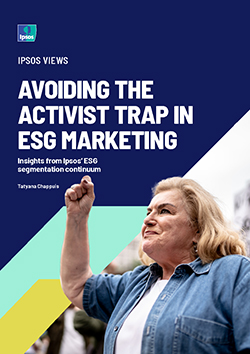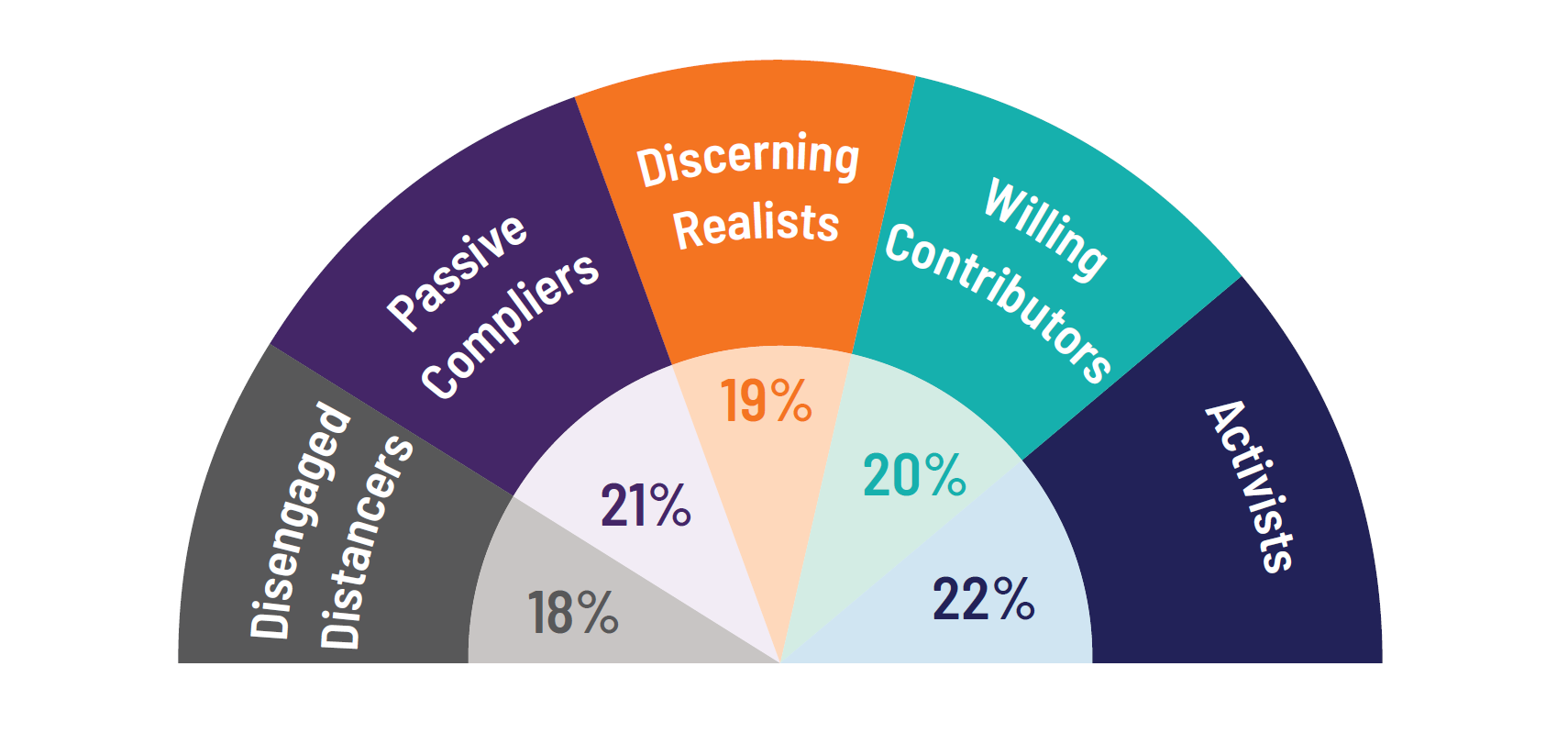Avoiding the Activist Trap in ESG Marketing
 When it comes to ESG, governments, citizens and businesses must navigate an enormous volume of information, often supported by various statistics and lengthy research reports.
When it comes to ESG, governments, citizens and businesses must navigate an enormous volume of information, often supported by various statistics and lengthy research reports.
The truth is, however, that companies are still struggling to get it right: being too vocal or not vocal enough, saying things that are important but not with the right tone, or focusing on things citizens feel aren’t critical.
ESG issues touch people’s lives in different ways. In order to help organizations connect their ESG initiatives with different groups’ realities, Ipsos conducted a global segmentation study, covering 10,000 people across 15 markets. The study identified five segments based on attitudes and behaviours across environmental, social and governance domains: Disengaged Distancers, Passive Compliers, Discerning Realists, Willing Contributors, and Activists.
In this paper, we outline why companies need to look beyond the loudest voices in the room, move their focus beyond the Activists, and focus on engaging the ‘overlooked middle ground’ in their ESG initiatives.
While attention to Activists is important, inattention to the other ESG segments can lead to missed opportunities and failed consumer activations.

Figure 1: Distribution of Segments
Key takeaways
- Expand your focus to include the broader spectrum of consumer segments and tailor your messaging to reach each group. The “ESG middle ground” holds potential for real change.
- Recognize stereotypes around “Activists” and avoid building on myths. For instance, their motivations are not solely altruistic and their willingness to pay for sustainable products is similar to other segments.
- Acknowledge societal divisions and focus on “healing the divided” rather than exacerbating differences. Most agree on the urgency of the environmental crisis and want companies and governments to do more. Build on this consensus. Approach polarizing topics where even Activists are divided, such as gender roles and family structures, carefully.
- Rebuild trust in businesses and governments by demonstrating effective action on ESG issues in partnership. While Discerning Realists trust businesses more than governments, Activists and Passive Compliers are sceptical of business leaders’ truthfulness. Transparency and collaboration are essential.



![[WEBINAR] CHATS 2026: The Intentional Consumer](/sites/default/files/styles/list_item_image/public/ct/event/2025-10/thumbnail-templates_4.png?itok=eyi3li7e)